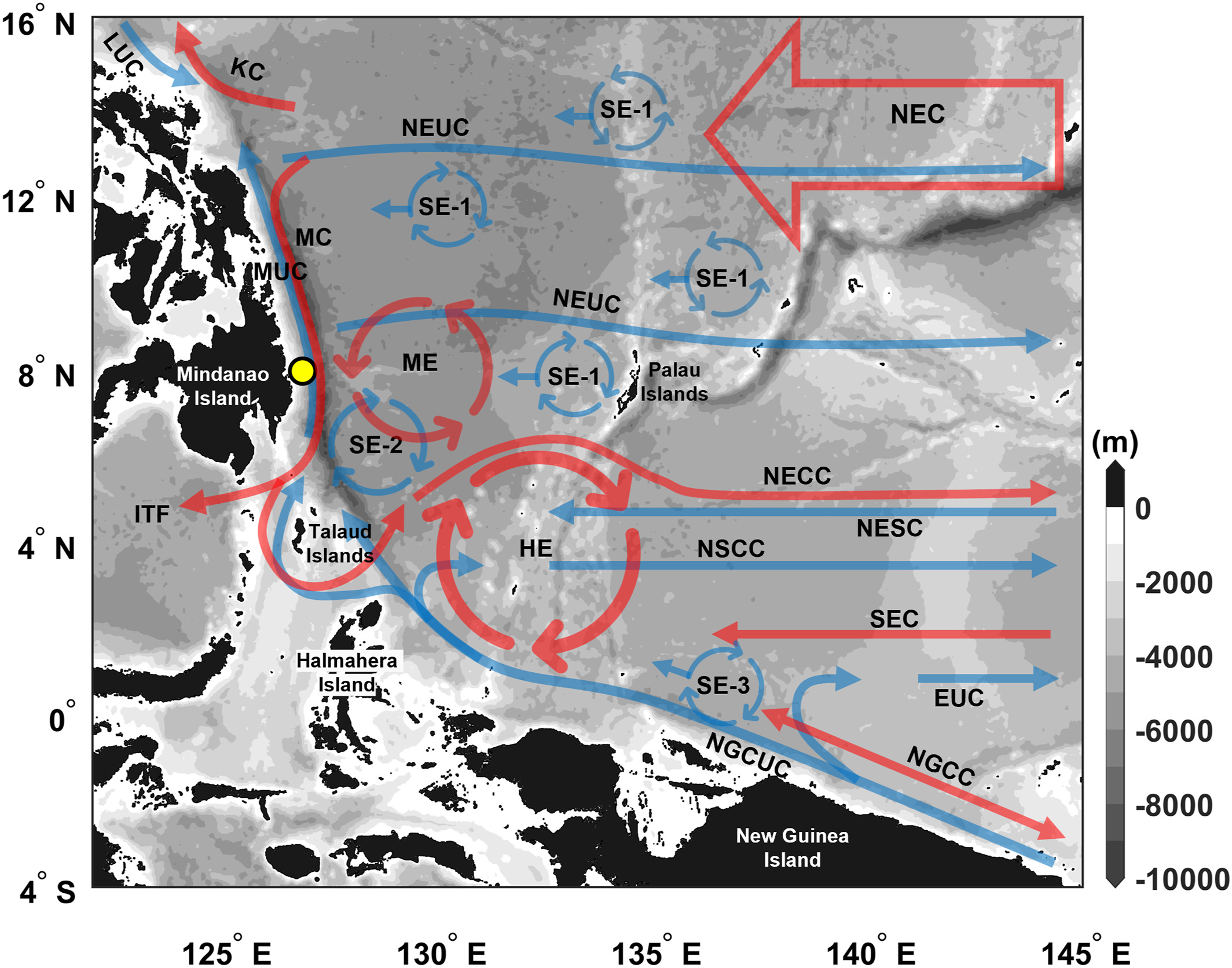Effect of the Intensified Sub-Thermocline Eddy on Strengthening the Mindanao Undercurrent in 2019
Fuad Azminuddin, Jae Hak Lee, Dongchull Jeon, Chang-Woong Shin, Cesar Villanoy, Seok Lee, Hong Sik Min, Dong Guk Kim
Published in Journal of Geophysical Research: Oceans, FEB 2022
The northward-flowing Mindanao Undercurrent (MUC) was directly measured by acoustic Doppler current profilers from a subsurface mooring at about 8°N, 127°E during 2 years (November 2017–December 2019). Its depth covers a range from 400 m to deeper than 1,000 m with its core appearing at around 900 m. The mean velocity of MUC's core was approximately 5.8 cm s−1 with a maximum speed of about 47.6 cm s−1. The MUC was observed as a quasi-permanent current with strong intraseasonal variability (ISV) with a period of 70–80 days. Further analyses with an eddy-resolving circulation model output suggest that the ISV is closely related to sub-thermocline eddies (SEs). In this study, two types of SEs near the Philippine coast are disclosed: the westward propagating SE (SE-1) and the quasi-stational SE southeast of Mindanao Island (SE-2). The SE-1 has both cyclonic and anticyclonic polarities with the propagation speed of 7–8 cm s−1, while the SE-2 is an anticyclonic eddy that moves erratically within 4–8°N, 127–130°E with the mean translation speed of about 11 cm s−1. Even though the SE-1 plays an important role in modulating the MUC, our results show that the observed strong MUC event (May–July 2019) is evidently induced by the intensified SE-2 that moves northwestward. This study emphasizes that the SE-2 when intensified, receives more energy from the strengthened New Guinea Coastal Undercurrent and loses the energy northward along the Philippine coast by intensifying the MUC.

Fig1. General pattern of the surface (red arrows) and subsurface (blue arrows) currents and eddies in the tropical northwest Pacific. The surface currents and eddies are the NEC (North Equatorial Current), the KC (Kuroshio Current), the MC (Mindanao Current), the NECC (North Equatorial Countercurrent), the SEC (South Equatorial Current), the NGCC (New Guinea Coastal Current), the ITF (Indonesian Throughflow), the HE (Halmahera Eddy), and the ME (Mindanao Eddy). The subsurface currents and eddies are the NEUC (North Equatorial Undercurrent), the LUC (Luzon Undercurrent), the MUC (Mindanao Undercurrent), the NESC (North Equatorial Subsurface Current), the NSCC (Northern Subsurface Countercurrent), the EUC (Equatorial Undercurrent), the NGCUC (New Guinea Coastal Undercurrent), SE-1 (westward propagating Sub-thermocline Eddy), SE-2 (Sub-thermocline Eddy southeast of Mindanao Island), and the SE-3 (northwestward propagating Sub-thermocline Eddy from New Guinea Coast). The yellow circle indicates the ADCPs mooring station. The gray shading indicates bathymetry.
Azminuddin, F., Lee, J. H., Jeon, D., Shin, C.-W., Villanoy, C., Lee, S., et al. (2022). Effect of the intensified sub-thermocline eddy on strengthening the Mindanao Undercurrent in 2019. Journal of Geophysical Research: Oceans, 127, e2021JC017883. https://doi.org/10.1029/2021JC017883